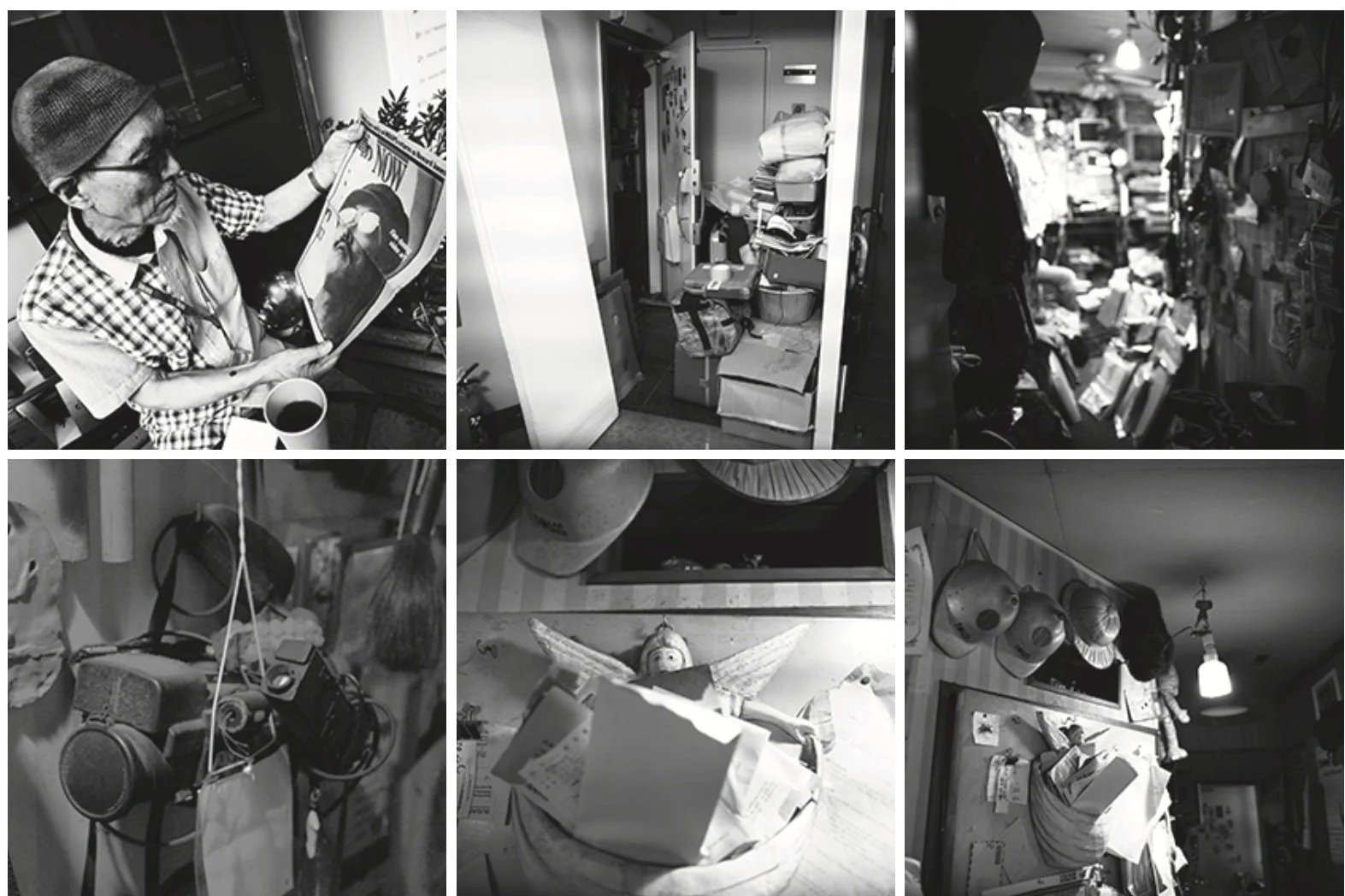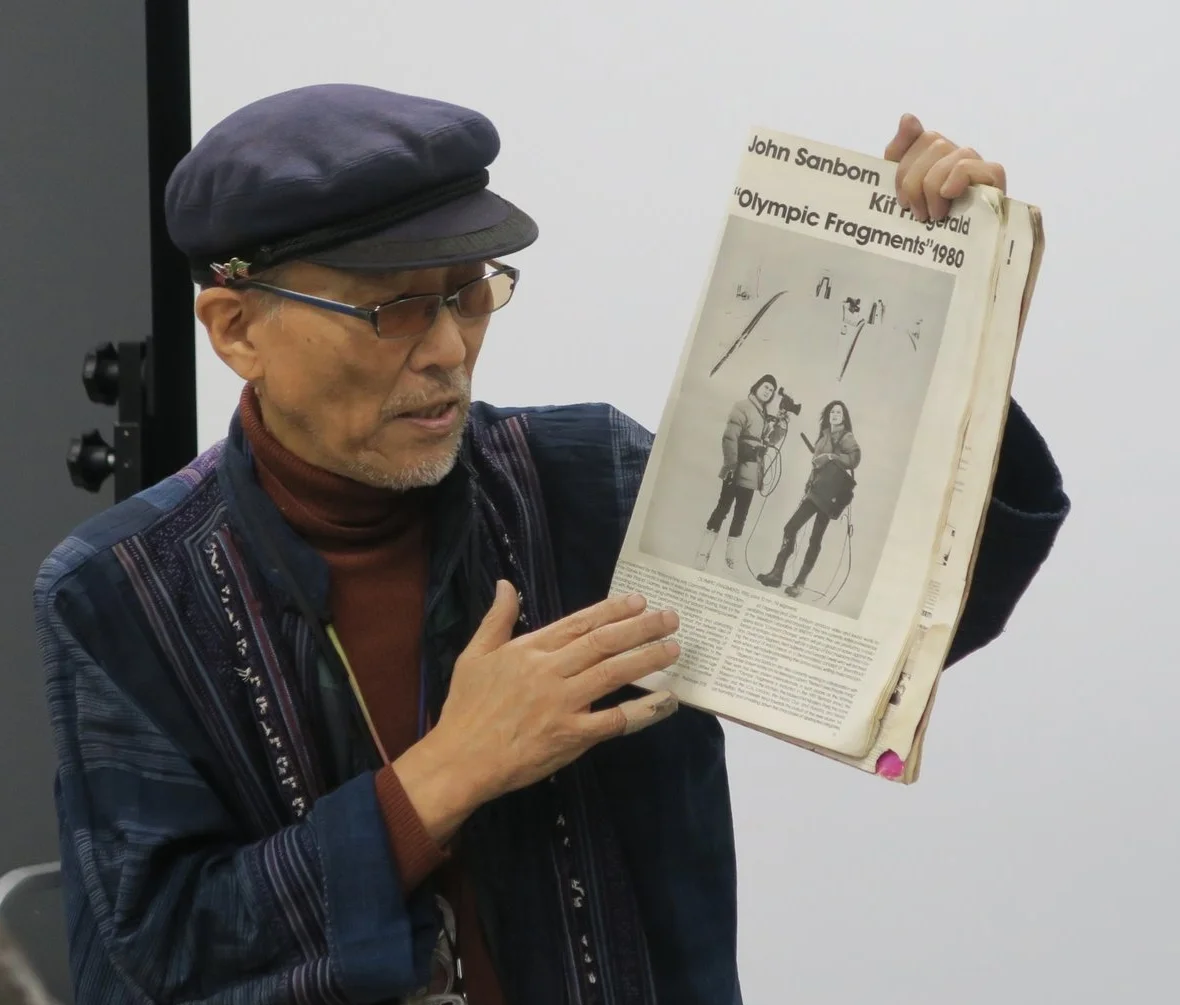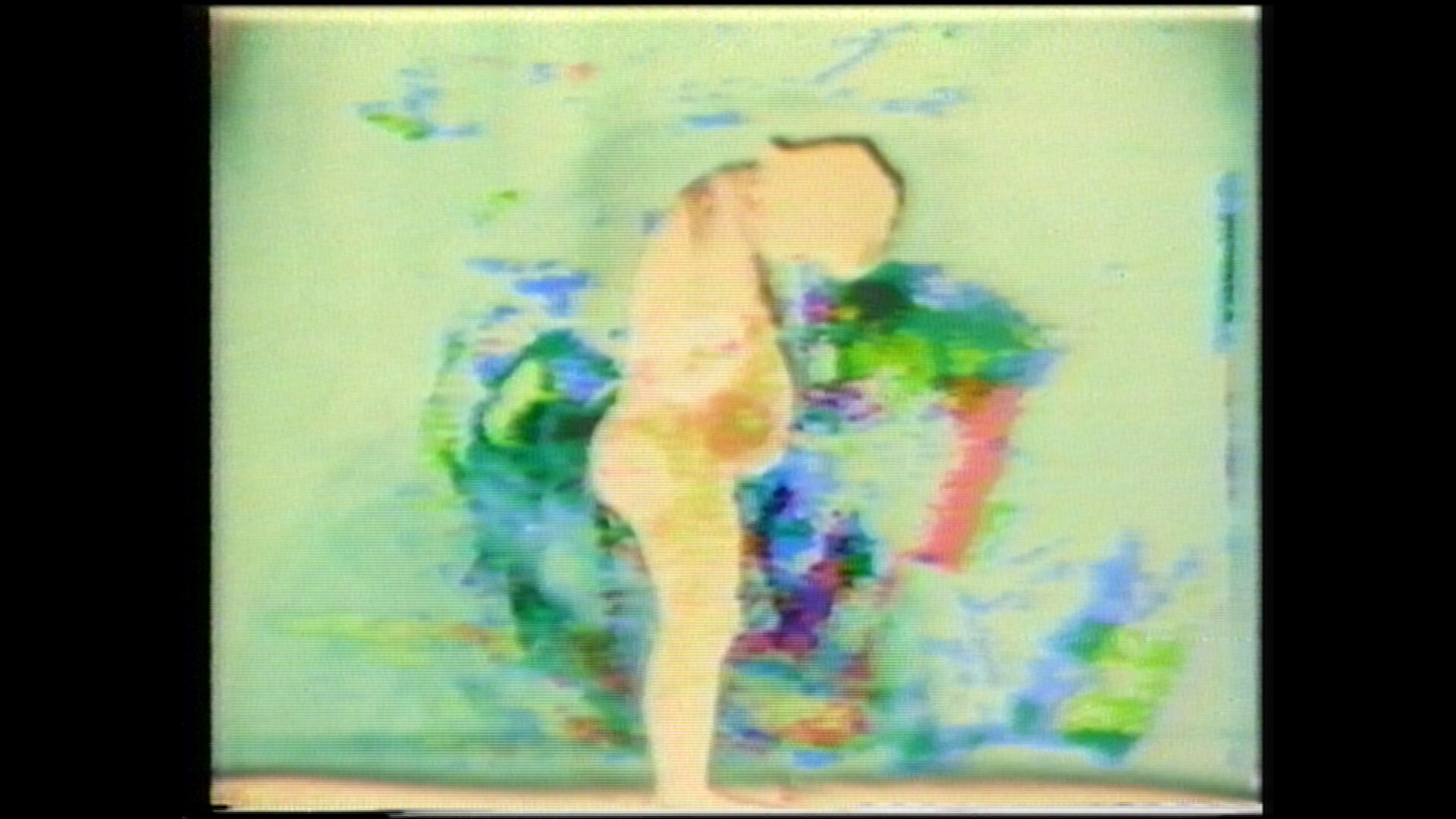ko nakajima part 1
From The Rooms in the Photographs—Ko Nakajima’s Rooms, Directed by Ko Nakajima, Photography by Hitoshi Kubo and Yosuke Nakagawa. Edited by Hitoshi Kubo. Courtesy of Keio University Art Center
Over the next four months, CCJ Monthly Members Viewing will focus on Ko Nakajima’s recently digitized titles, offered in partnership with Keio University Art Center. The presentations will be organized around themes: Study on My Life (January), technical experiments (February), documentary (March), and CATV work and collective Video Earth Tokyo (April).
January marks the beta launch of CCJ Viewing Platform, which will be celebrated with an online launch event on January 12th with Nakajima, Barbara London, Alex Zahlten, and Fusako Matsu. In addition, there will be a free public viewing of Nakajima’s representative work, My Life. We invite members to dive deeper into Nakajima’s life by entering Nakajima’s Tokyo studio, now no longer existent, via the video piece, The Rooms in the Photographs—Ko Nakajima’s Rooms. In mid-January, an essay by Hitoshi Kubo of the Keio University Art Center will illuminate the January video offerings.
In addition in January, Keio University Art Center is organizing the “My Life Study” event on January 22nd in Tokyo.
CCJ’s research on Nakajima’s works began with the 2018 Collection Survey. CCJ is pleased to collaborate with Keio University Art Center to present works that were identified during the survey.
January - My Life Study
The Rooms in the Photographs—Ko Nakajima’s Rooms (2019)
My Life (1971-2014)
February - Technical Experiments
Animaker, Aniputer, Scanimate experiments
March - Documentary
Rolling Coconuts
Have a Seat (1981)
April - CATV / Video Earth Tokyo works
TBA
The programs will be available for viewing on CCJ’s viewing platform.
January: My Life Study Viewing Materials (on the Viewing Site)
My Life, 1971-2014
There are many versions of Ko Nakajima’s representative work, My Life, which Nakajima began making in 1971 and continues to edit as personal life events occur. Nakajima’s wish is to continue editing onto this work to include his own death and beyond his passing, allowing the work to grow on its own and witness the generational transformations of video technology and his family. The version presented here is 1971-2014 version. The 2-channel black and white piece (edited into one channel here) starts off with Nakajima’s mother’s funeral on the left and the birth of his daughter on the right. While the monitor that presents the mother’s death continue on to the scene of transferring the bones into an urn, the other monitor shows Nakajima’s daughter becoming older, further moving forward to his grown son and his wife. Nakajima’s stepmother, who was in the right monitor smiling through the grandchildren’s scenes, is now transferred to the left monitor and is shown receiving nursing care. On the right shows his daughter graduating college. The stepmother’s funeral is shown on the left, while the birth of Nakajima’s grandson is on the right. That grandson becomes a boy and holds Nakajima’s stepmother’s funeral photo in the left monitor, while the right shows the daughter’s wedding. On the left is his grandson (from his son) chasing his daughter, and on the right is Nakajima’s granddaughter from his daughter playing with her classmates.
Essays by Hitoshi Kubo (to be published in mid-January) and Nina Horisaki Christens (link below) will be /are available for further details.
The Rooms in the Photographs—Ko Nakajima’s Rooms
Directed by Ko Nakajima, Photography by Hitoshi Kubo and Yosuke Nakagawa. Edited by Hitoshi Kubo. Courtesy of Keio University Art Center
Produced in 2019 in conjunction with the research and exhibition organized by Hitoshi Kubo of Keio University Art Center, The Rooms in the Photographs—Ko Nakajima’s Rooms strings together a series of photographs documenting his studio in Tokyo and Nakajima’s performance. Conceived in conjunction with the research into Nakajima’s 1,500 photo documentation of artist Yutaka Matsuzawa’s Psi Zashiki Room in 1969, the project is an invaluable record of Nakajima’s extraordinary work space where video equipments, films and videos, printed materials, amassed over the years function as a system for Nakajima’s memory keeping. Seemingly random and chaotic placement of objects produced an idiosyncratic formula for the artist to access certain information—the studio and his brain functioned as one.
Reference Material
Pleating Machine No. 3 (Keio University Art Center, 2019) PDF. 久保仁志編・著 + Nina Horisaki-Chriatens著 『プリーツ・マシーン』3号、慶應義塾大学アート・センター、2019年
/ Edited by Hitoshi Kubo, written by Hitoshi Kubo and Nina Horisaki-Chriatens, Pleating Machine No. 3 (Keio University Art Center, 2019) (The text version of Kubo’s essay in Japanese and in English will be published by the end of January)
Event
Keio University Art Center is organizing the “My Life Study” event on January 22nd in Tokyo.
Hitoshi Kubo
A man who was born in Tokyo, 1977 and now lives in Kanagawa. An archivist at Keio University Art Center, among other activities. Departing from certain archives or specific referential materials and montaging various spatiotemporal perspectives that they encompass, many of his projects shed light on not only events that occurred but also those that could have occurred, fundamentally as a way for him to explore possibilities to redesign conditions of human experiences as variable circuits by means of observation, analysis, and construction of montages employed in films and other artistic works, driven by his trust to the world, which in his eyes essentially stands as a process of self-generation and flickering. Recent writings include Montaging Penumbra: on a Motif of Archive (report for JSPS Grants-in-Aid for Scientific Research 26580029 | 2017) and “A Case of a Studio: Shuzo Takiguchi and a
Laboratory,” NACT Review, no. 5 (2018 | National Art Center Tokyo). At Keio University Art Center, he has directed a project to reconsider archives, called Pleating Machine (2018–).
久保仁志:
1977年に東京で生まれ現在神奈川で暮らす。慶應義塾大学アート・センター・アーキヴィスト他。プロジェクトの多くはあるアーカイヴおよび具体的諸資料から出発し、それらが包含する様々な時空間的パースペクティヴを編集(モンタージュ)することで起こった出来事だけでなく起こりえた出来事を照射してみせるのだが、その根底にあるのは映画をはじめとした芸術作品における編集の観察・分析・構築を通して人間の経験の諸条件を可変的回路として設計し直す可能性の探求であり生成明滅しつつも過程としてあるこの世界への信にほ
かならない。近著に『〈半影〉のモンタージュ:アーカイヴの一つのモチーフについて』(「JSPS 科研費 26580029」レポート|2017年)、「ある書斎の事件記録——瀧口修造と実験室について」『NACT Review 国立新美術館研究紀要』5号(2018|国立新美術館)慶應義塾大学アート・センターにてアーカイヴを考えるための企画『プリーツ・マシーン』(2018-)を行っている。








